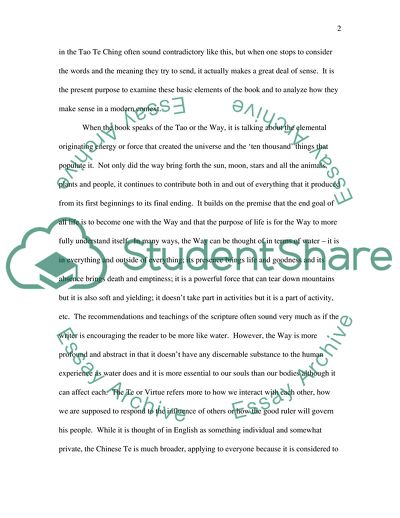Cite this document
(The Theology of Tao Te Ching along with Taoism and Buddhism Essay Example | Topics and Well Written Essays - 1500 words, n.d.)
The Theology of Tao Te Ching along with Taoism and Buddhism Essay Example | Topics and Well Written Essays - 1500 words. https://studentshare.org/religion-and-theology/1734786-tao-te-ching
The Theology of Tao Te Ching along with Taoism and Buddhism Essay Example | Topics and Well Written Essays - 1500 words. https://studentshare.org/religion-and-theology/1734786-tao-te-ching
(The Theology of Tao Te Ching Along With Taoism and Buddhism Essay Example | Topics and Well Written Essays - 1500 Words)
The Theology of Tao Te Ching Along With Taoism and Buddhism Essay Example | Topics and Well Written Essays - 1500 Words. https://studentshare.org/religion-and-theology/1734786-tao-te-ching.
The Theology of Tao Te Ching Along With Taoism and Buddhism Essay Example | Topics and Well Written Essays - 1500 Words. https://studentshare.org/religion-and-theology/1734786-tao-te-ching.
“The Theology of Tao Te Ching Along With Taoism and Buddhism Essay Example | Topics and Well Written Essays - 1500 Words”. https://studentshare.org/religion-and-theology/1734786-tao-te-ching.


